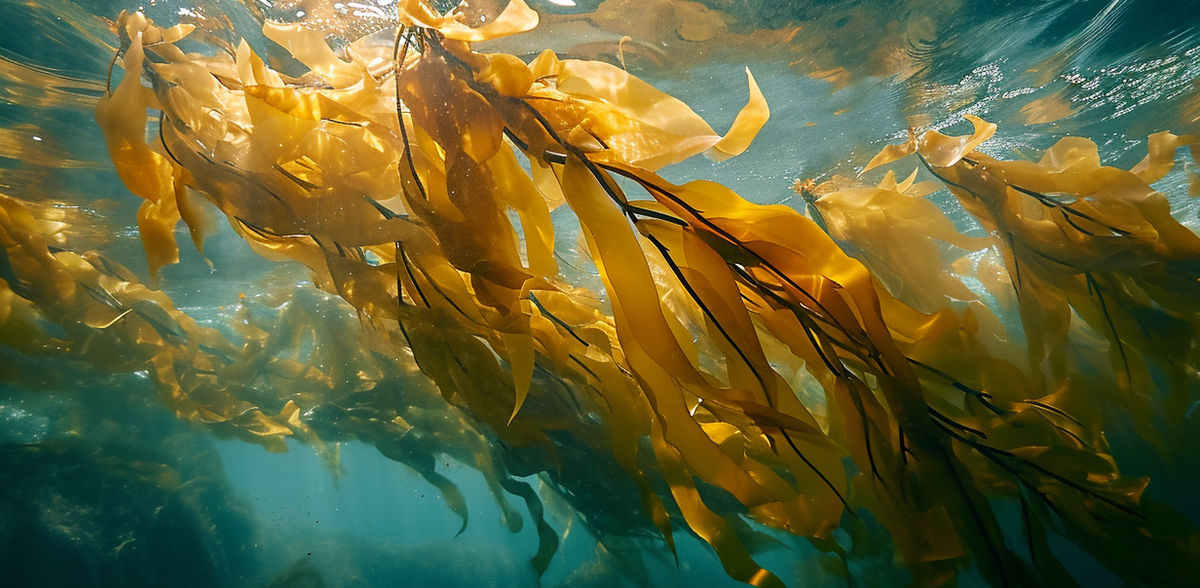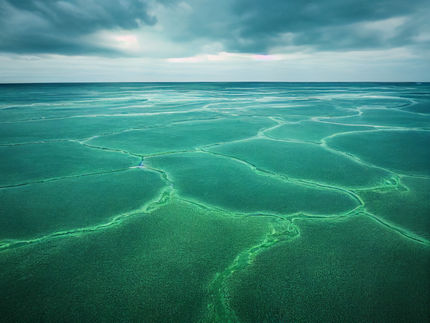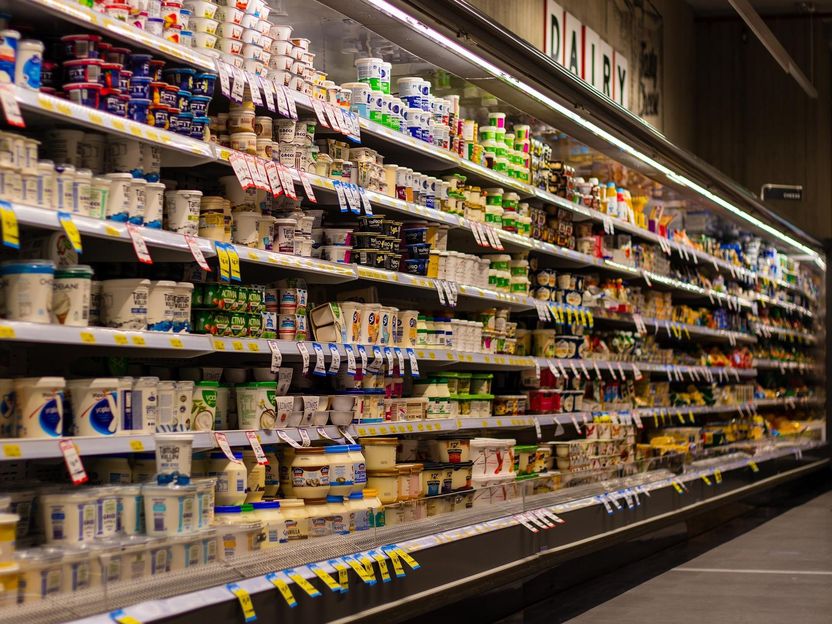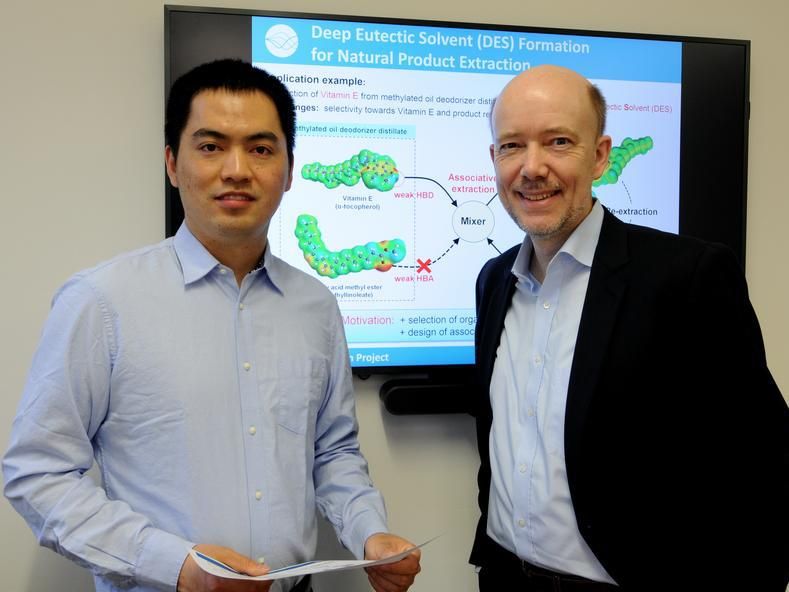Cultivated kelp can now be as good as wild kelp
You may not know much about alginates, but you have probably used them or eaten them. Cultivating kelp can help expand the market for this useful product
Norway’s exports products derived from from tangle kelp (Laminoria hyperborea) and knotted kelp (Ascophyllum nodosu) to the tune of more than NOK 1 billion a year. The industry mainly extracts alginate from kelp, which is used in over 600 different products as diverse as paint, soft serve ice cream, sauces, bandages, nappies, acid reflux medicine and material for encapsulating cells and medicine. However, the market is far from saturated.
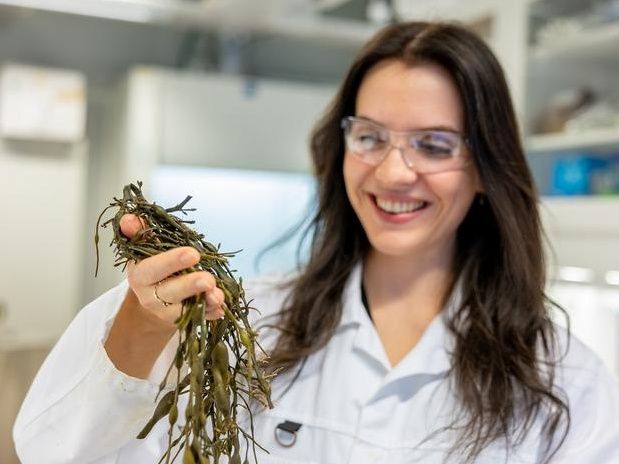
There’s a lot of money to be made by cultivating kelp. Katharina Nøkling-Eide, a PhD candidate at the Norwegian Seaweed Biorefinery Platform, is helping make it happen.
Aleksander Stokke Båtnes, NTNU
“Alginate is becoming a scarce commodity on the global market. There are great opportunities here if we could cultivate more kelp that yielded alginate of good enough quality,” says Finn Aachmann, a professor at the Norwegian University of Science and Technology (NTNU) who heads the Norwegian Seaweed Biorefinery Platform.
Today, wild tangle kelp is harvested from the large kelp forests that grow naturally along the Norwegian coast, but there are limits on the amount that can be harvested. We need new resources if we want to expand the Norwegian kelp market. Cultivated kelp is a good alternative.
The kelp industry is expanding
Tangle kelp grows so slowly that its cultivation is simply not worthwhile. Over the past decade, the cultivation of more fast-growing kelp species has developed into a thriving industry.
“This year, between 600 and 700 tonnes of sugar kelp and winged kelp were grown on ropes in the sea,” says Katharina Nøkling-Eide, a PhD candidate at the Norwegian Seaweed Biorefinery Platform.
However, alginate comes in many forms, and cultivated sugar kelp and winged kelp don't produce alginate of the same high quality as wild tangle kelp does. Cultivated kelp is currently so expensive that it is only used in food production.
“This is a shame because production could be scaled up significantly through the development of new, high-quality products from cultivated kelp. Alginate could be one of these products,” says Nøkling-Eide.
Fortunately, new findings may help us be able to extract better alginate from the cultivated kelp. This research has been undertaken under the auspices of the Norwegian Seaweed Biorefinery Platform and Industrial Biotechnology (SFI-IB), a Norwegian Centre for Research-based Innovation.
Cultivated species can be just as good
“We have developed a new method for efficiently upgrading alginates from cultivated kelp,” says Aachmann.
The solution involves enzymes called epimerases. Enzymes promote chemical reactions between different substances without the enzymes themselves being used up.
“These epimerases convert mannuronic acid into guluronic acid in the alginate chain, so that the alginates are more similar to the tangle kelp alginates than they originally were, making them more industrially viable,” says the professor.
Researchers isolated these enzymes for the first time from an alginate-producing bacterium in Trondheim more than 50 years ago, so this research goes back a long way. However, it is not until now that the seaweed industry has embraced the solution.
Required additional time and resources – until now
“Over the past 30 years, several studies have shown that we can use these epimerases to upgrade alginates from seaweed and kelp, but the kelp industry has not yet started using them,” says Aachmann.
Upgrading alginates after they have been extracted and purified from the kelp biomass takes additional time and resources. So, the industry hasn’t really been tempted to use the method.
However, what if you could add these enzymes at the same time as extracting the alginate from kelp – so you wouldn’t have to spend extra time and money doing it afterwards?
This is exactly what researchers from SINTEF and the Norwegian University of Science and Technology (NTNU) have managed to do. They carried out the study in a joint laboratory for kelp in Trondheim.
Improves alginate during extraction
“We have shown that it is possible to epimerise alginates from sugar kelp, winged kelp and the lamina fraction, which is the leaf -like section at the top of the stalk, during the actual alginate extraction process,” says Nøkling-Eide.
In other words, the alginate is refined at the same time as it is being extracted from kelp. This saves time and is cost-effective.
“In large-scale trials, we managed to get an alginate from cultivated sugar kelp that was just as good as the industry would normally get from wild-harvested tangle kelp,” says Nøkling-Eide.
The researchers also believe that it is possible to achieve similar results with cultivated winged kelp.
Good news for kelp farmers
“The findings of this study are encouraging. In the future, Norwegian alginate may also come from cultivated kelp,” says Aachmann.
Kelp farmers are also dependent on established kelp markets, because they need someone to sell all their kelp to. This will help kelp farmers further increase their production.
“The alginate market is an established market that can help secure the livelihoods of kelp farmers in the future. In that sense, it is a win–win situation,” says Nøkling-Eide.
New products from kelp are important for SFI Industrial Biotechnology. The centre's partners are SINTEF, NTNU, NMBU and NORCE and 16 industrial companies.
